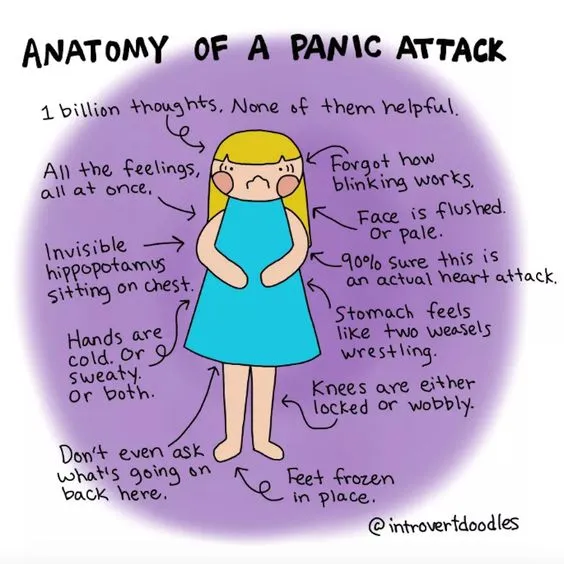
Image Credit
In my previous article, Childhood and Adult Disorder: Panic Disorder/Panic Attacks Part 1 – An Actual Account of a Panic Attack, I told my story about my first panic attack episode while driving to work. I described what had actually happened when I was suddenly hit with a panic attack, what symptoms I had experienced and how it has affected me for the rest of my life. It is a horrible experience to go through, that words are inadequate to describe the actual sheer terror one goes through during that period of panic. I would never wish that experience on anyone not even my worst enemy.
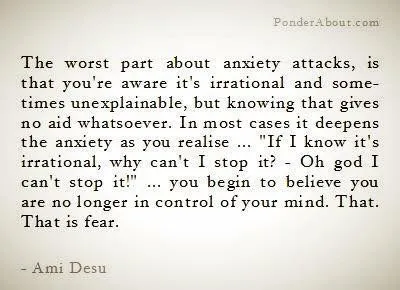
Image Credit
In this article I will attempt to explain what panic attacks/panic disorders are, its symptoms, and treatment approaches. I can’t stress enough about the value of being educated in this area so that if you see anyone suffering from anxiety, you can help them by sharing what you know. A little knowledge is such a valuable tool to have, because it really can save many from suffering like I did, not knowing what was happening to me. I learned the hard way but it is my mission to educate as many as I can to avoid the same path I had to take.
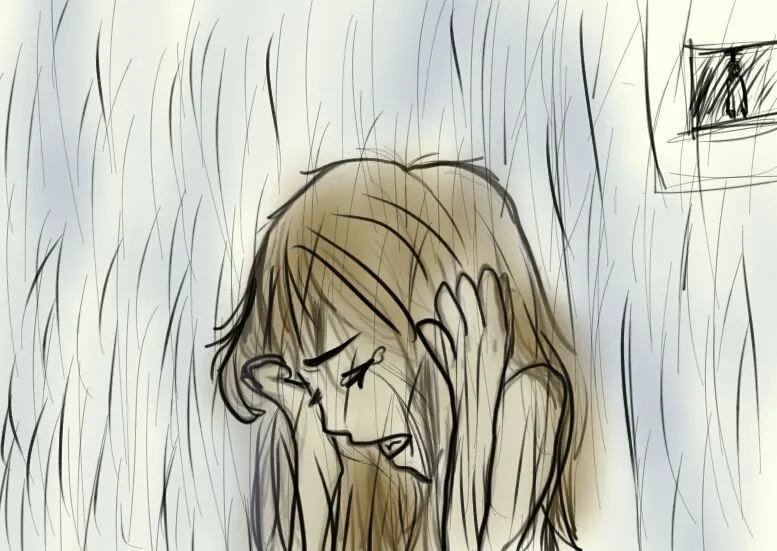
Image Credit
What is Panic Disorder/Panic Attack?
According to the National Institute of Mental Health (NIH) (https://www.nimh.nih.gov/health/publications/panic-disorder-when-fear-overwhelms/index.shtml) “people with Panic Disorder have sudden and repeated attacks of fear that last for several minutes or longer. These are called Panic Attacks. Panic attacks are characterized by a fear of disaster or of losing control even when there is no real danger. A person may also have a strong physical reaction during a panic attack. It may feel like having a heart attack. Panic attacks can occur at any time, and many people with panic disorder worry about and dread the possibility of having another attack.”
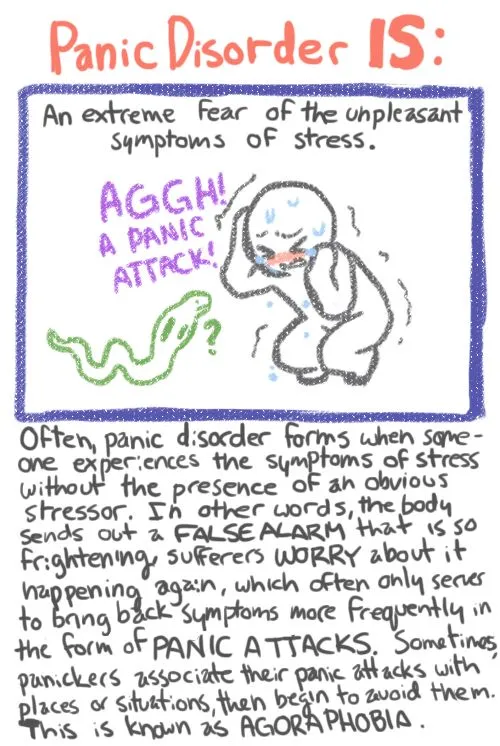
Image Creit
NIH went on to say that a lot of people who have panic disorder eventually become discouraged because they can’t do normal routines because of this anticipated fear. Routine tasks can be things like going to school, going shopping, driving, working or doing social activities. Panic usually begins in the late teens or early adulthood and more women than men get panic disorder. They did note, however, that not everyone who experience panic attacks will develop panic disorder.
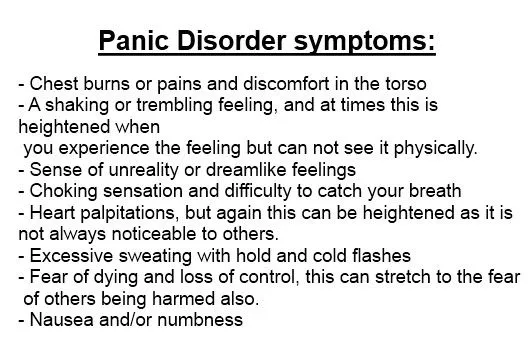
Image Credit
What Are the Symptoms?
As stated many times, a panic attack is a sudden, unanticipated rush of fear or anxiety that causes a person extreme distress and feelings like they are in imminent danger but there is no actual danger present. So what are the symptoms? The following is a list by Anxiety Centre (http://www.anxietycentre.com/panic-attack-symptoms.shtml):
Symptoms May Include:
- A feeling of overwhelming fear
- Feeling like you are going crazy or losing control
- Fear that you are going crazy, going to die, or pass out
- Feeling like you are in grave danger
- Feeling like you are dying
- A surge of doom and gloom
- Feeling you might pass out
- An overpowering sense of dread
- Feeling like things are surreal
- Feeling like you are losing touch with reality
- Feeling like you need to urgently escape
- Dizziness
- Heart Palpitations
- Trembling, shaking
- Sweating
- Shortness of breath
- Chest pressure or pain
- Turning pale
- Weak in the knees
- Burning skin
- Pins and needles
- Hot and cold flashes
- Numbness and tingling sensations
These symptoms are worse if the person doesn’t realize what is happening to them. If they don’t know what it is, things probably get worse because one will get more anxious which then leads to stronger symptoms which leads to another attack, etc. This is the horrible cycle of panic attacks. More anxiety leads to more symptoms that are getting worse and then more panic attacks and the cycle continues.
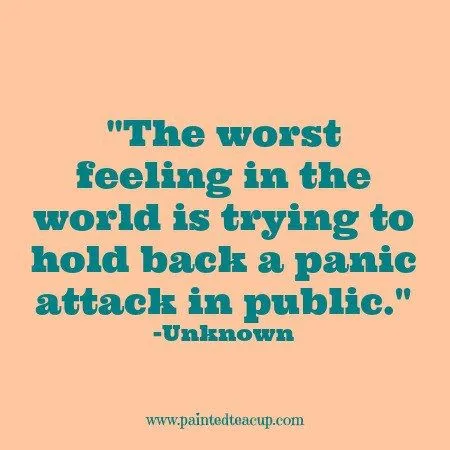
Panic Attack Symptoms Can Be Accompanied By Other Experiences?
Anxiety Centre also listed what can also accompany panic attack symptoms:
- Choking sensation, tightening throat, it feels like your throat is closing, it feels like something is stuck in your throat
- Confusion
- Depersonalization (feeling detached from reality, separate from one-self, separate from normal emotions)
- De-realization (feeling unreal, in a dream-like state)
- Dizziness, lightheadedness, unsteadiness
- Emotional distress
- Emotional upset
- Inability to calm yourself down
- Knot in the stomach, tight stomach
- Nausea
- Panicky feeling
- Pounding, racing heart
- Butterflies in the stomach
- Sudden urge to go to the bathroom (urinate, defecate)
- Vomiting
- Feel like crying
- Feel like freaking out
Judging by all the possible symptoms and experiences a sufferer of Panic Attacks can go through, you can see what a horrible experience it can be. Some attacks can last for several hours which can be such a toll on the individual.
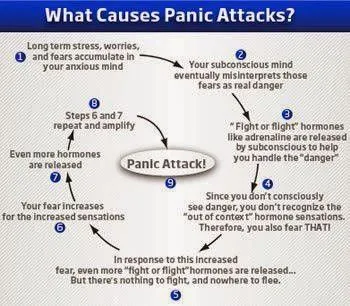
Image Credit
What Causes Panic Disorder?
As of today there is no clear cause of panic disorders but research has shown that it could be genetically linked. There are also associated things that can accompany panic disorder like a significant transition that may occur in life like getting divorced, getting married, having your first child, losing a job, etc. These are all major life transitions that can occur in one’s life and cause an extreme amount of stress. Such stress and pressure can lead to the development of panic disorder.
According to Calm Clinic (http://www.calmclinic.com/anxiety-guide/panic-attacks) “stress causes the mind to focus on the negatives and assume worst case scenarios, so it's possible that some people develop panic disorder during these periods of stress. Others may have poor breathing habits and health anxiety - the combination of which can lead to panic disorder. Still others may develop it for no reason at all.”
It is also felt that certain groups of people are more likely to develop panic disorder, one of which is women. Women are twice as likely than men to develop anxiety. Other researchers believe that panic attacks are more common in the highly intelligent who are more prone to misinterpret physical sensations due to their, living inside their head, thinking all the time.
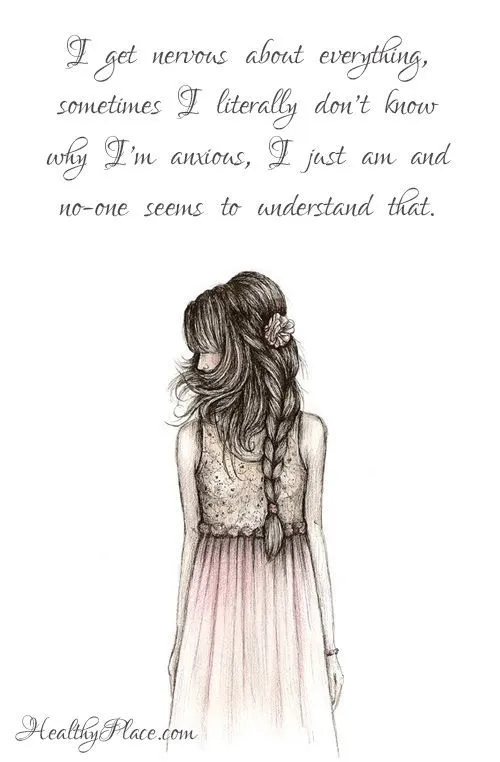
Image Credit
How Is Panic Disorder Treated?
The medical treatment for panic attacks is focusing on the symptoms with the goal of reducing these symptoms or eliminating them. This is usually done through therapy that usually does cognitive-behavioral therapy (CTB). CTB teaches the client to change his/her thoughts and actions, thereby making the client understand the attacks, and teaches him/her how to manage the fear. Other medical intervention can include selective serotonin reuptake inhibitors (SSRIs) which can include fluoxetine, paroxetine and sertraline. Another medication that is sometimes used are antidepressants, anti-seizure drugs, and tranquillizers.
It is recommended that the panic attack sufferer look to other alternative interventions as well.
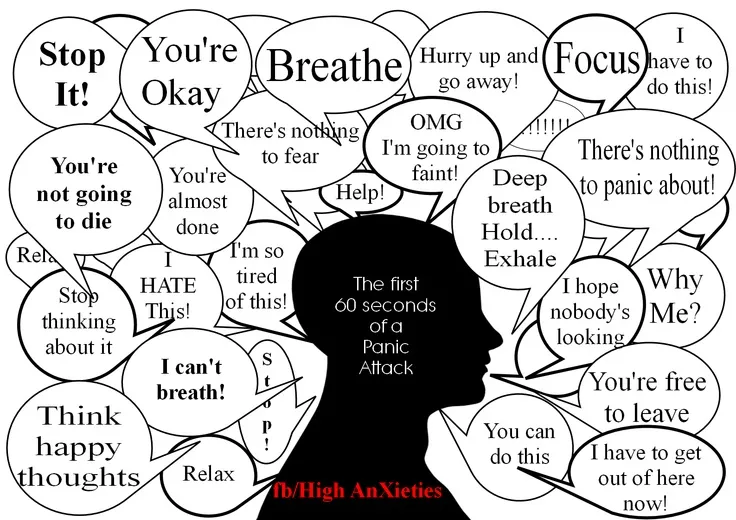
Image Credit
Alternative Ways To Deal With Panic Disorder
According to Healthline (http://www.healthline.com/health/how-to-stop-a-panic-attack#1) there are some strategies one can use to try to stop a panic attack when you are having one or feeling one coming on:
- Use deep breathing: Focus on taking deep breaths in and out through your mouth, feeling the air slowly fill your chest and belly and then slowly leave them again. Breathe in for a count of four, hold for a second, and then breathe out for a count of four.
- Recognize that you’re having a panic attack: By recognizing that you’re having a panic attack instead of a heart attack, you can remind yourself that this is temporary, it will pass, and that you’re ok. Take away the fear that you may be dying or that impending doom is looming, both symptoms of panic attacks. This can allow you to focus on other techniques to reduce your symptoms.
- Close your eyes: To reduce the external stimuli, close your eyes during your panic attack. This can block out any extra stimuli and make it easier to focus on your breathing.
- Practice mindfulness: Mindfulness can help ground you in the reality of what’s around you. Since panic attacks can cause a feeling of detachment or separation from reality, this can combat your panic attack as it’s approaching or actually happening. Focus on the physical sensations you are familiar with, like digging your feet into the ground, or feeling the texture of your jeans on your hands. These specific sensations ground you firmly in reality and give you something objective to focus on.
- Find a focus object: Some people find it helpful to find a single object to focus all of their attention on during a panic attack. Pick one object in clear sight and consciously note everything about it possible. Describe the patterns, color, shapes, and size of the object to yourself. Focus all of your energy on this object, and your panic symptoms may subside.
- Use muscle relaxation techniques: Muscle relaxation techniques can help stop your panic attack in its tracks by controlling your body’s response as much as possible. Consciously relax one muscle at a time, starting with something simple like the fingers in your hand, and move your way up through your body.
- Picture your happy place: What’s the most relaxing place in the world that you can think of? A sunny beach with gently rolling waves? A cabin in the mountains? Picture yourself there, and try to focus on the details as much as possible. Imagine digging your toes into the warm sand, or smelling the sharp scent of pine trees. This place should be quiet, calm, and relaxing.
- Engage in light exercise: Endorphins keep the blood pumping in exactly the right away. It can help flood our body with endorphins, which can improve our mood. Because you’re stressed, choose light exercise that’s gentle on the body, like walking or swimming.
- Keep lavender on hand: Lavender is known for being soothing and stress-relieving. It can help your body relax. If you know you’re prone to panic attacks, keep some lavender essential oil on hand and put some on your forearms when you experience a panic attack. Breathe in the scent. You can also try drinking lavender or chamomile tea. Both are relaxing and soothing.
- Repeat a mantra internally: Repeating a mantra internally can be relaxing and reassuring, and it can give you something to grasp onto during a panic attack. Whether it’s simply “This too shall pass,” or a mantra that speaks to you personally, repeat it on loop in your head until you feel the panic attack start to subside.
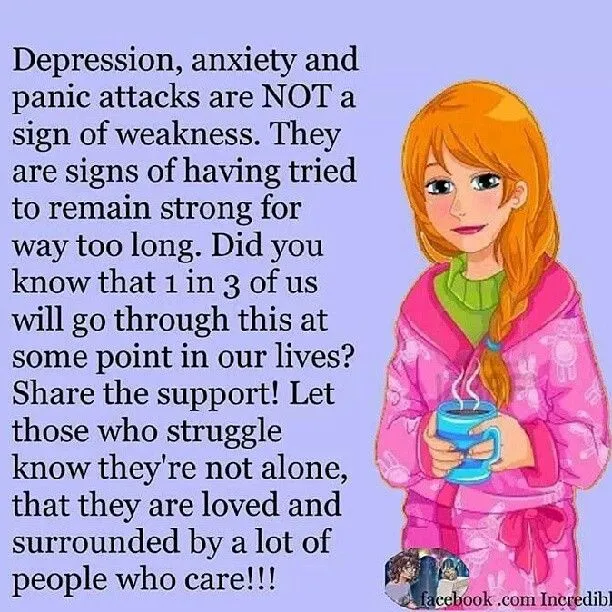
Image Credit
It is highly recommended to read as much as possible about panic disorders or panic attacks if you suffer from this disabling condition. The more you know and the more you practice helpful interventions, can literally help you live a wonderful and happy life. Eating healthy, exercising, getting enough sleep/rest, practicing stress reduction techniques, meditating, & finding positive things in your life can help ward off future attacks. I personally feel that the longer you can go without triggering an attack, you will raise your threshold higher and higher, thereby ensuring your chances of having another attack as very slim.
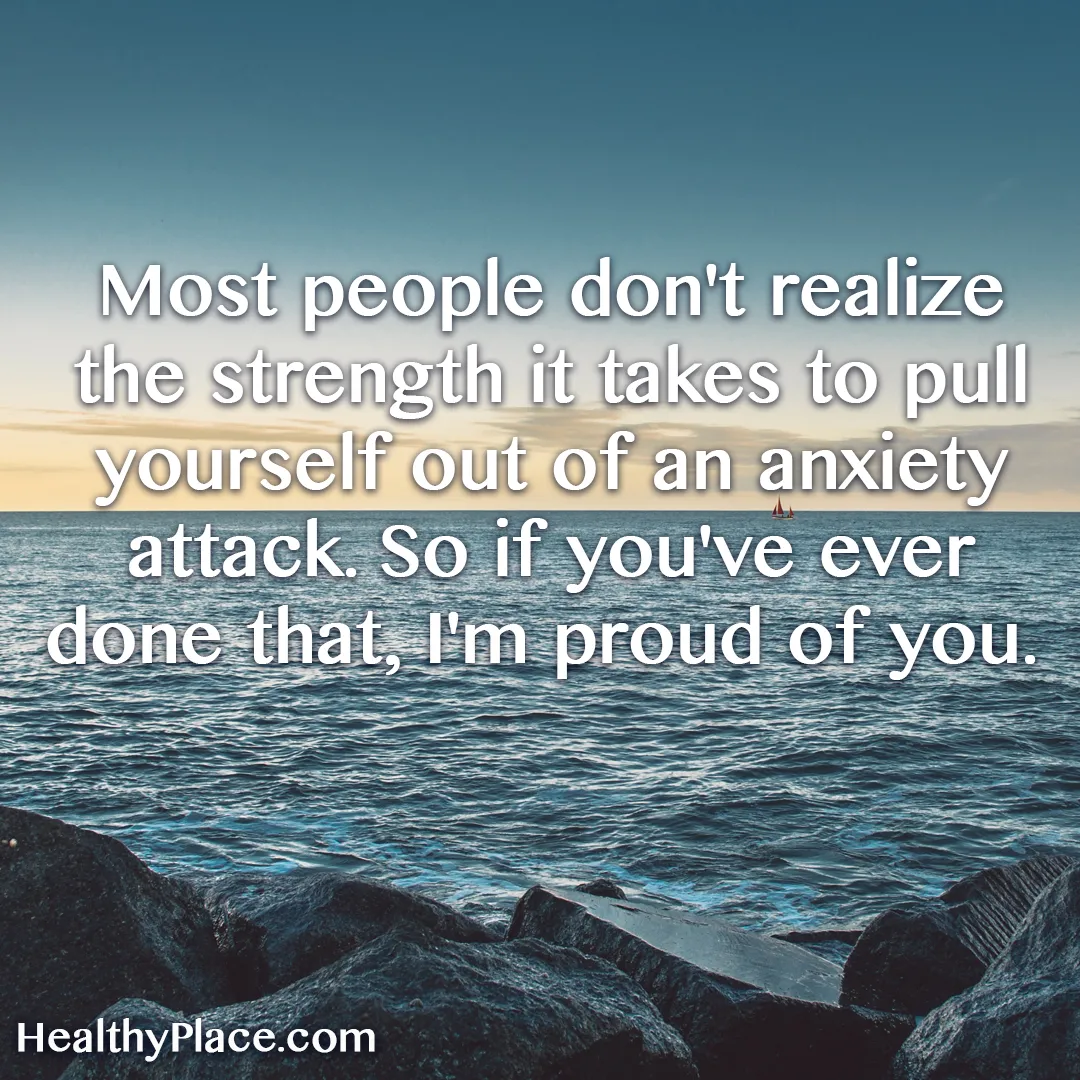
Thank-you for reading my article on Childhood & Adult Anxiety: Panic Disorder/Panic Attack – Part 2. This will conclude my series on Childhood Anxiety. If you would like to follow me, please check HERE.
These are my previous articles on Childhood Anxiety if you are interested in reading it:
Childhood Anxiety: The Anxious Child
https://steemit.com/steemiteducation/@cabbagepatch/childhood-anxiety-the-anxious-child
Childhood Anxiety: What Types of Disorders Do Children Have to Deal With https://steemit.com/steemiteducation/@cabbagepatch/childhood-anxiety-what-types-of-disorders-do-children-have-to-deal-with
Childhood Anxiety: Selective Mutism Disorder
https://steemit.com/steemiteducation/@cabbagepatch/childhood-anxiety-selective-mutism-disorder
Childhood Anxiety: Separation Disorder:
https://steemit.com/steemiteducation/@cabbagepatch/childhood-anxiety-separation-disorder
Childhood Anxiety: Obsessive-Compulsive Disorder in Children:
https://steemit.com/steemiteducation/@cabbagepatch/childhood-anxiety-obsessive-compulsive-disorder-in-children
Childhood Anxiety: Phobias:
https://steemit.com/steemiteducation/@cabbagepatch/childhood-anxiety-phobias
Childhood & Adult Anxiety Disorder: Panic Disorder/Panic Attacks Part 1 – Account of an Actual Panic Attack:
https://steemit.com/steemiteducation/@cabbagepatch/childhood-and-adult-anxiety-disorder-panic-disorder-panic-attacks-part-1-account-of-an-actual-panic-attack